With the introduction of the new EU sustainability legislation on Digital Product Passports (DPPs) underway, understanding and prioritising the consumer’s point of view is essential for fashion retailers.
What is a Digital Product Passport?
In July 2024, the Ecodesign for Sustainable Products Regulation (ESPR) became law in Europe, mandating the implementation of Digital Product Passports (DPP). But what is a Digital Product Passport? Essentially, it is a digital record containing critical information about a product’s lifecycle. By 2027, all fashion items entering the EU market will require a Digital Product Passport, detailing materials, manufacturing, supply chain, environmental impact and end-of-life instructions.
Clothing, footwear and textiles form part of the first wave for implementation, with other products like furniture, mattresses, detergents and cosmetics to follow, based on recycling potential.
Sustainability, however, is not front of mind for consumers when buying fashion, as ongoing cost pressures have moved their focus towards value. As part of this shift, consumers have adopted more conscientious shopping behaviours such as buying fewer but better quality items and contributing to circular fashion trends by reselling their fashion items. While environmental concerns do not primarily drive these behaviours, they do lay the foundations for the principles behind the successful adoption of Digital Product Passports (DPPs).
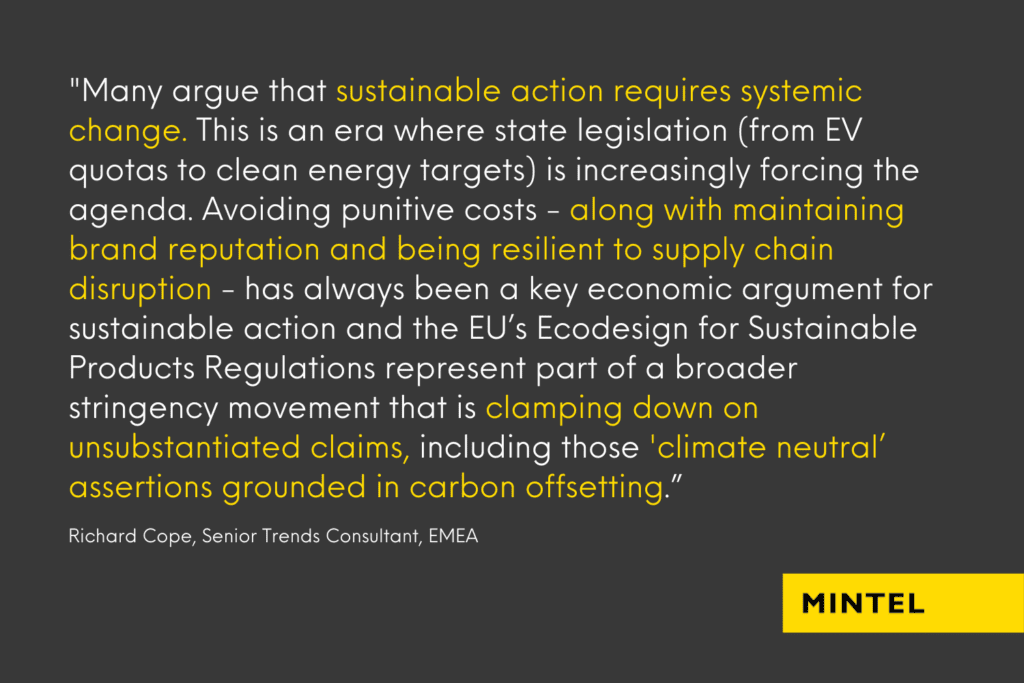
Key Considerations When Designing a Digital Product Passport
Durability is twice as important as environmental impact
DPPs for fashion will need to include numerous datapoints. As well as the manufacturing process and environmental footprint, EU Digital Product Passports will also require a durability score and link to circular services. For retailers, designing effective Digital Product Passports will involve a fine balance between providing comprehensive information without overwhelming consumers.
A recent survey by Mintel asked consumers to think about the information on clothing labels and what would influence whether or not they bought the item.
The results show that Britons are more than twice as likely to care about the durability of a clothing item and how to care for it, rather than its environmental impact.
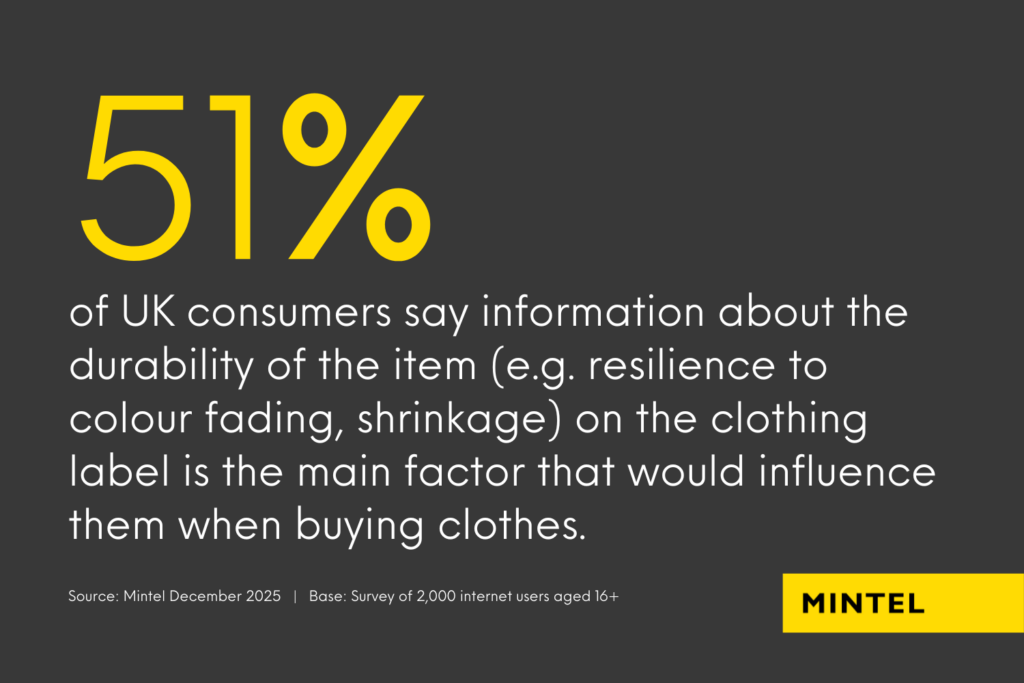
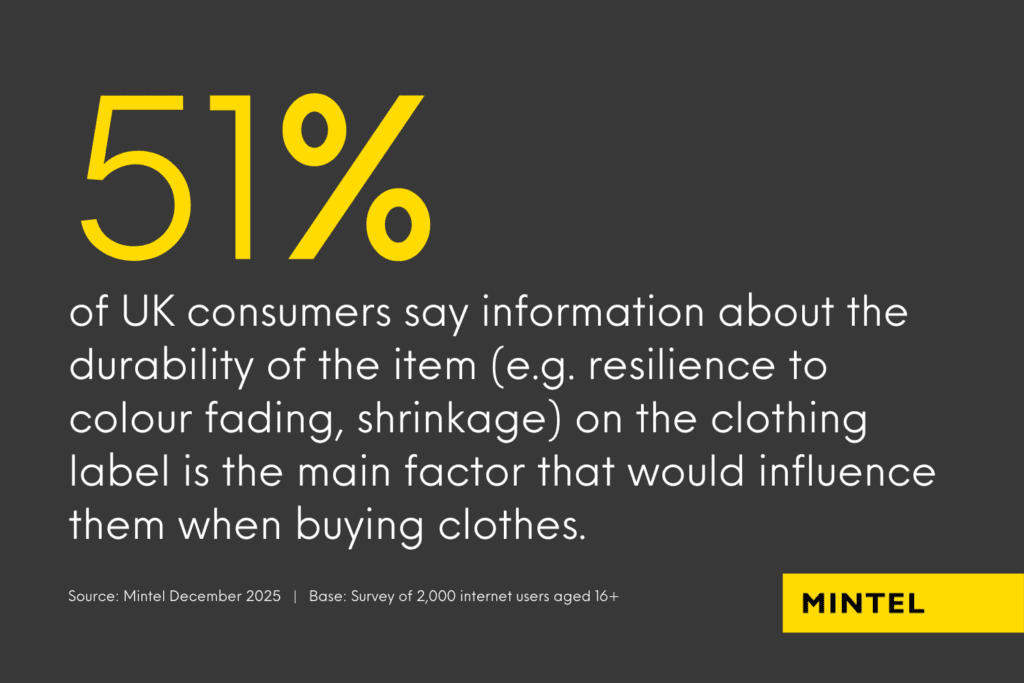
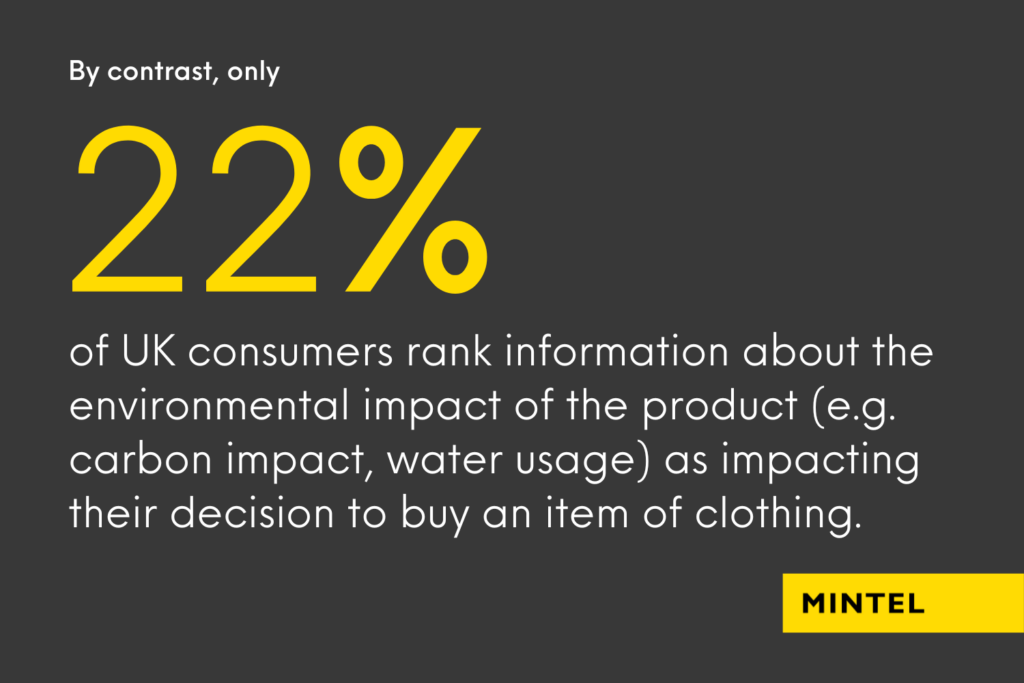
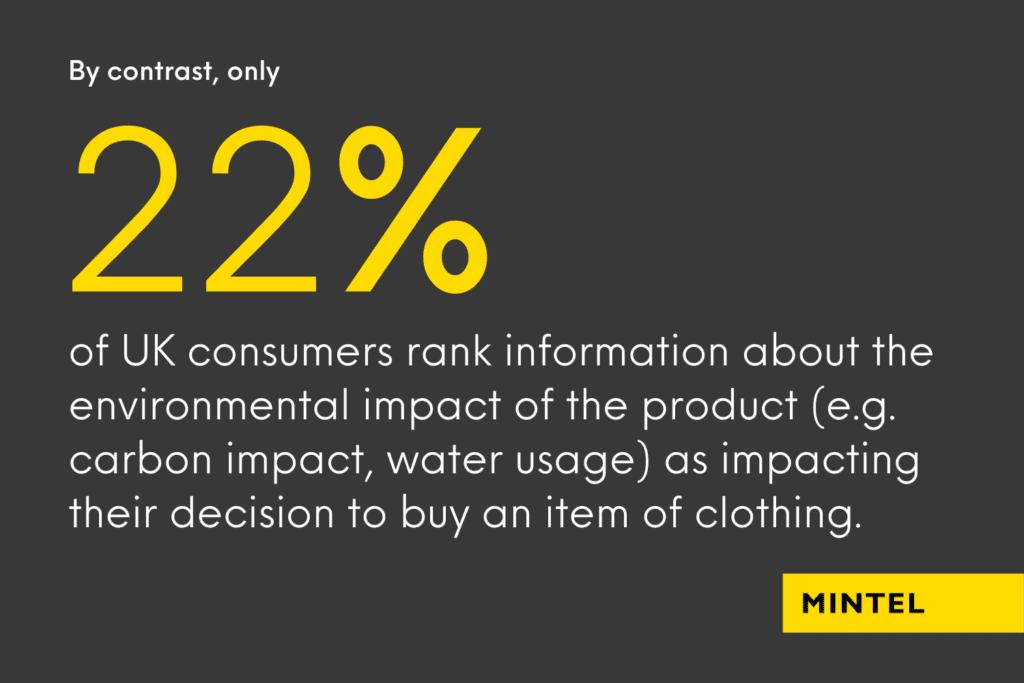
One leading technology business working in this space is Fabacus. It is working on DPPs with the main clothing retailers in the UK, including Tesco. It has created a durability gage in bright colours that looks to emulate the food labelling traffic light system with details on a garment’s colour fastness and shrinkage.
Piloting Digital Product Passports can help brands find the right solution
We are seeing more fashion brands start to pilot DPPs that are internally facing first, allowing them to test different scenarios before scaling them up. This proactive approach is preferable to waiting for the finalised EU Digital Product Passport legislation criteria to be released at the end of 2025.
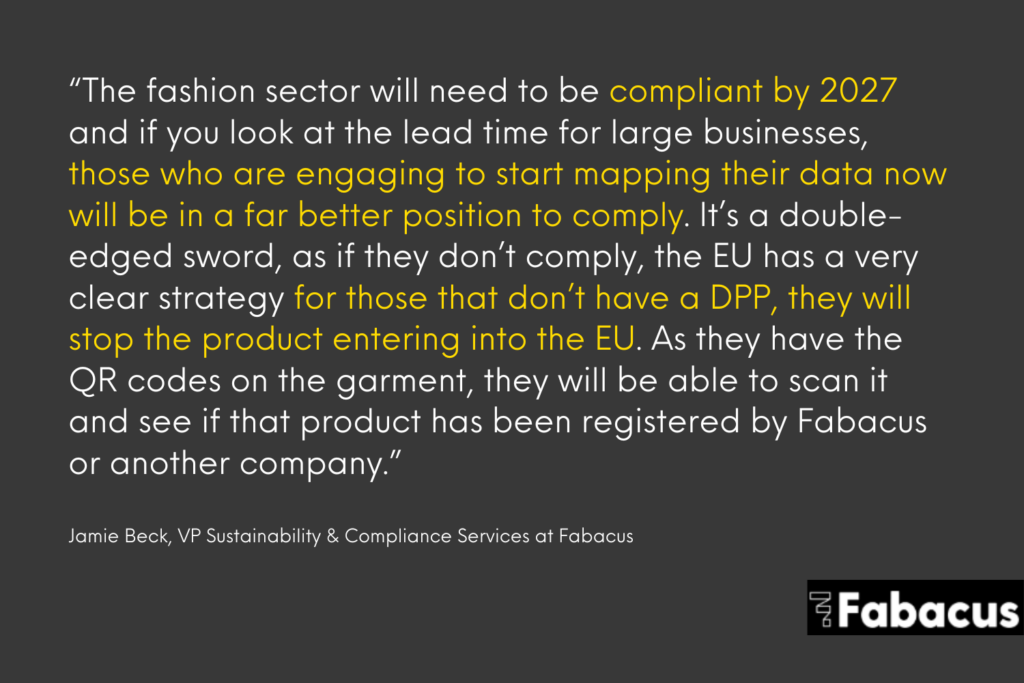
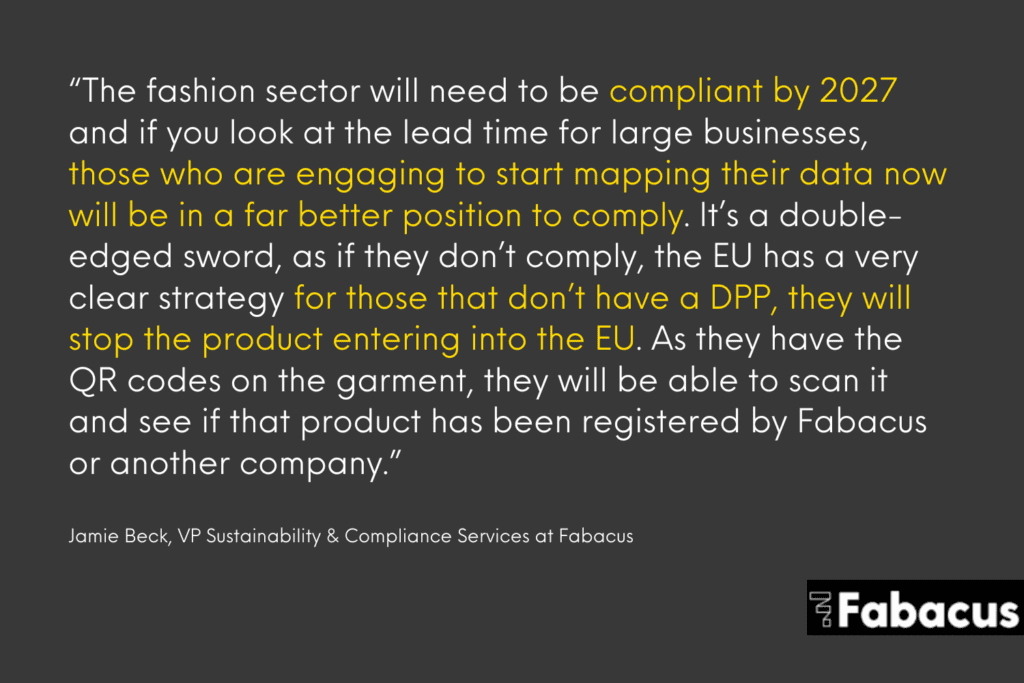
Womenswear brand Nobody’s Child, which was one of the early adopters when it trialled DPPs on its denim collection, drove engagement by offering customers who scanned the QR code a gift including money to spend on a shopping spree.
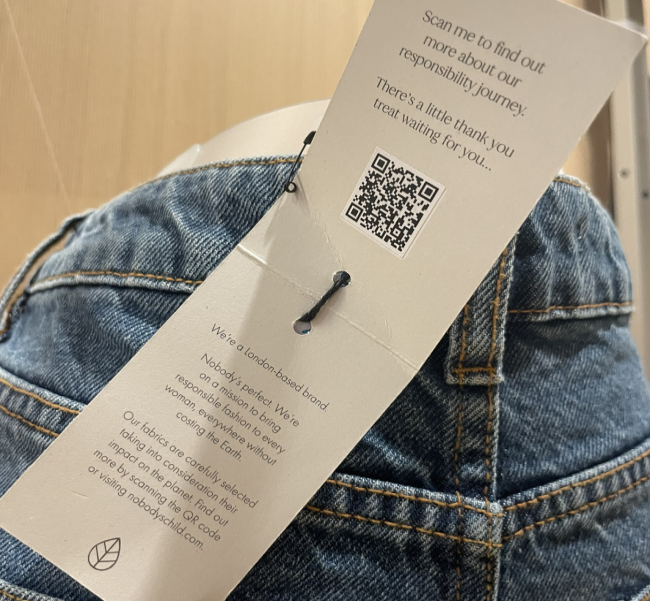

Retailers will need to find ways to incentivise customers to scan QR codes to access DPPs. Offering discounts and invitations to special events can be one way of encouraging people to click on them and to show they can add value to a purchase, showing the real world application of Digital Product Passports.
“What is really powerful about DPPs is the commercial aspect,” says Jamie Beck, VP Sustainability and Compliance at Fabacus. He explains that you can build a retailer’s loyalty programme into the QR code of the DPP and link it all up with multiple options. You can then ask customers to review the product or the shopping experience and offer them tailored discounts, promotions or gifts such as a sustainable weekend away. This will incentivise them to scan it. Further ahead, you can also use it to order your size if they don’t have it in stock or to compare prices of similar items.
As the introduction of DPPs will coincide with the decommissioning of the barcode and their replacement with QR codes globally, it has the potential to change the way consumers interact with products.
How Digital Product Passports Can Add Value for Consumers
Promote the longevity of fashion items
A key purchase driver for women when looking at the information on clothing labels is how to care for an item. This is a critical opportunity for DPPs to provide additional value to shoppers.
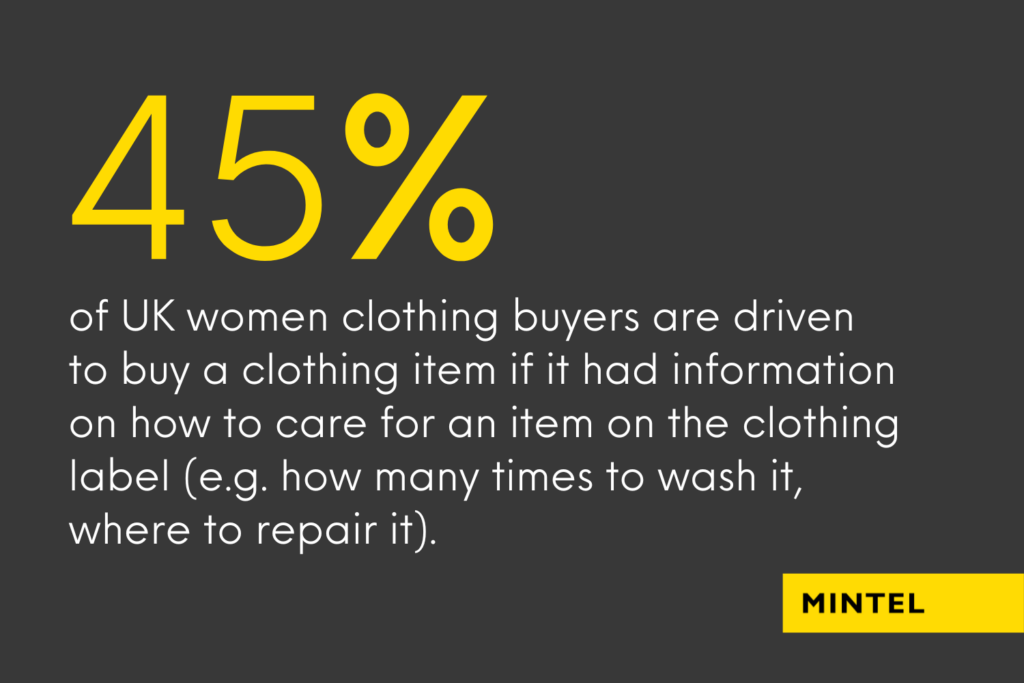
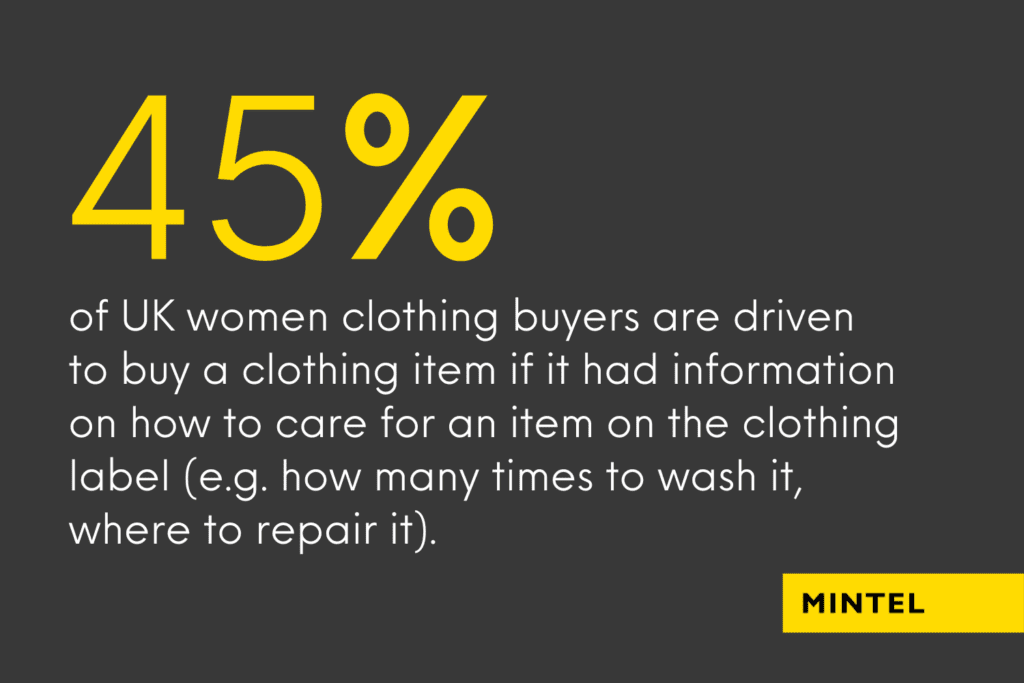
As retailers may choose to show a personalised public view of their DPP adapted to their customer base, detailed information on how to wash and look after clothes to make them last longer should be a focus for womenswear brands. This information could also be signposted in swing tags and social media campaigns.
Given that women are more likely than men to look to reduce energy use at home to cut costs (client-access only), offering tips on how to care for the garment, whilst minimising energy and water usage, can help to increase brand loyalty.
There is also scope to gift a care kit or complimentary alteration service for some products to drive customer engagement with the Digital Product Passports.

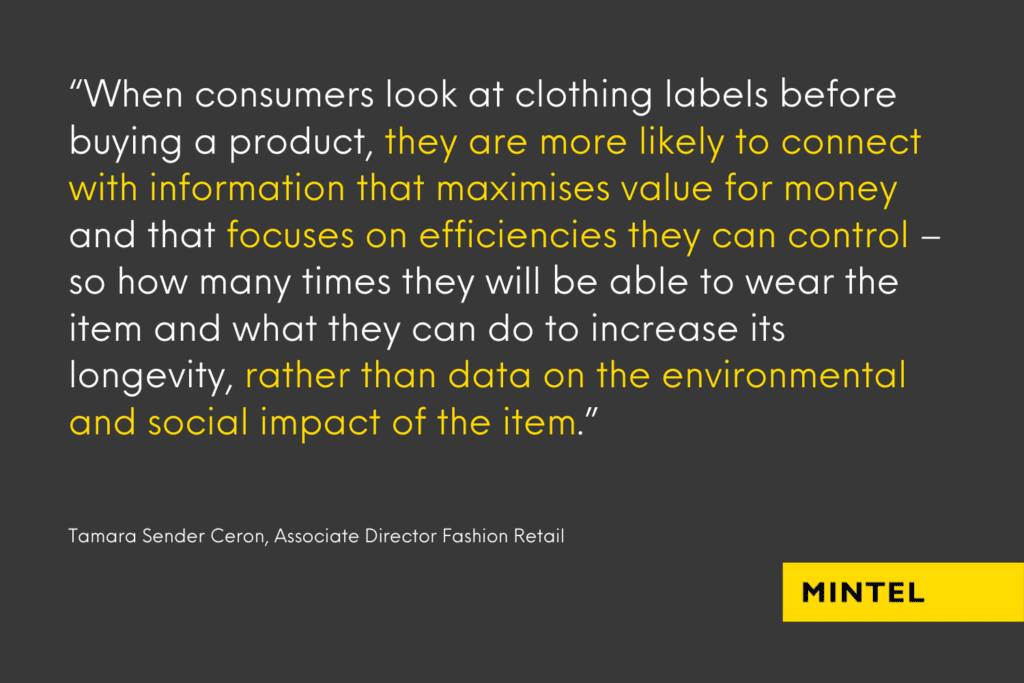
Monetising the full lifecycle of a product
Younger consumers, particularly Gen Z, show much higher levels of interest in buying clothes with information on the label about end-of-life, compared to the average shopper.
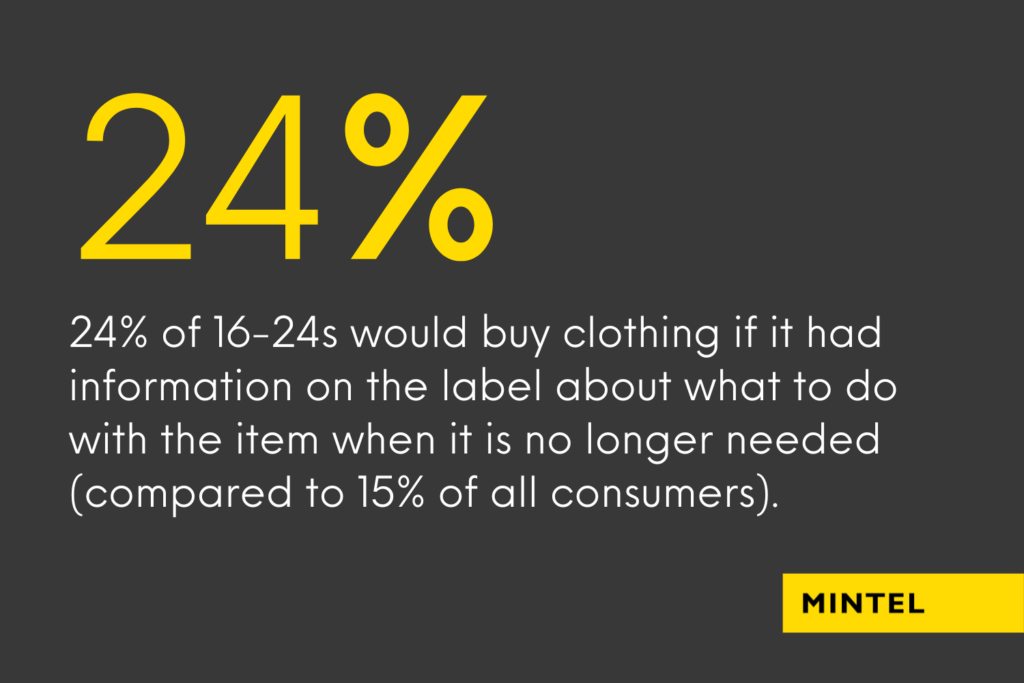
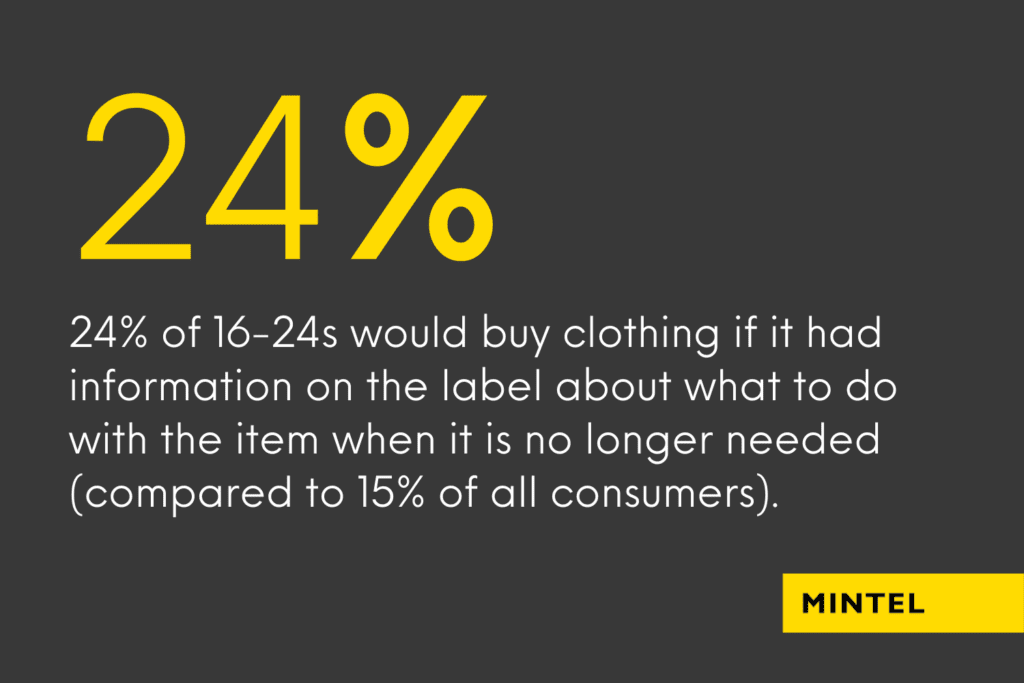
Growing numbers of Gen Zs contribute to circular fashion trends and sell clothes they no longer wear and are consciously purchasing items from brands that resell well, as they increasingly make value judgements on the long-term value (LTV) of products.
As Digital Product Passports will need to include details of end-of-life options, brands can leverage this to engage with younger audiences and streamline the resale process.
Furthermore, DPPs will also enable companies to maintain contact with customers and offer them circular aftersales options such as repairs. This opens up opportunities to monetise the entire product lifecycle, while strengthening the emotional connection people have with their clothing through upcycling and personalisation services.
Outdoorwear brand Bergans of Norway took a unique approach when trialling Digital Product Passports with Trimco, and chose to focus on their circular services, allowing customers to seamlessly repair and rent their products via a QR code.
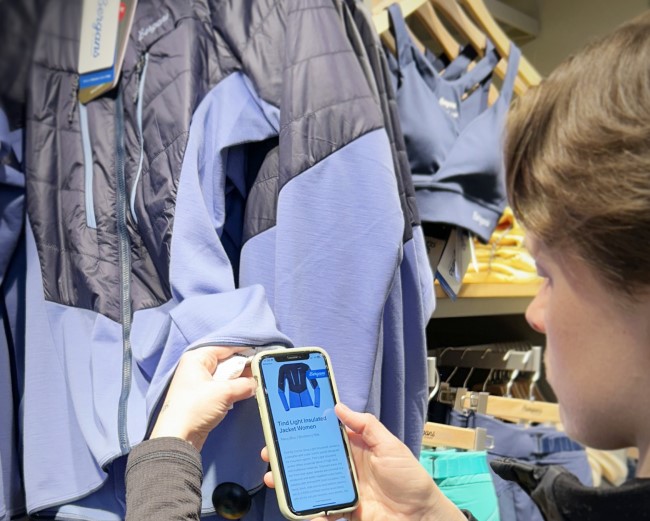

In an era of dupes, DPPs can provide authenticity
People from higher income households are more likely to prioritise the environmental and social impact when making purchasing decisions. They also value transparency and are more driven to buy an item of clothing if it has information on the label about where the item was made.
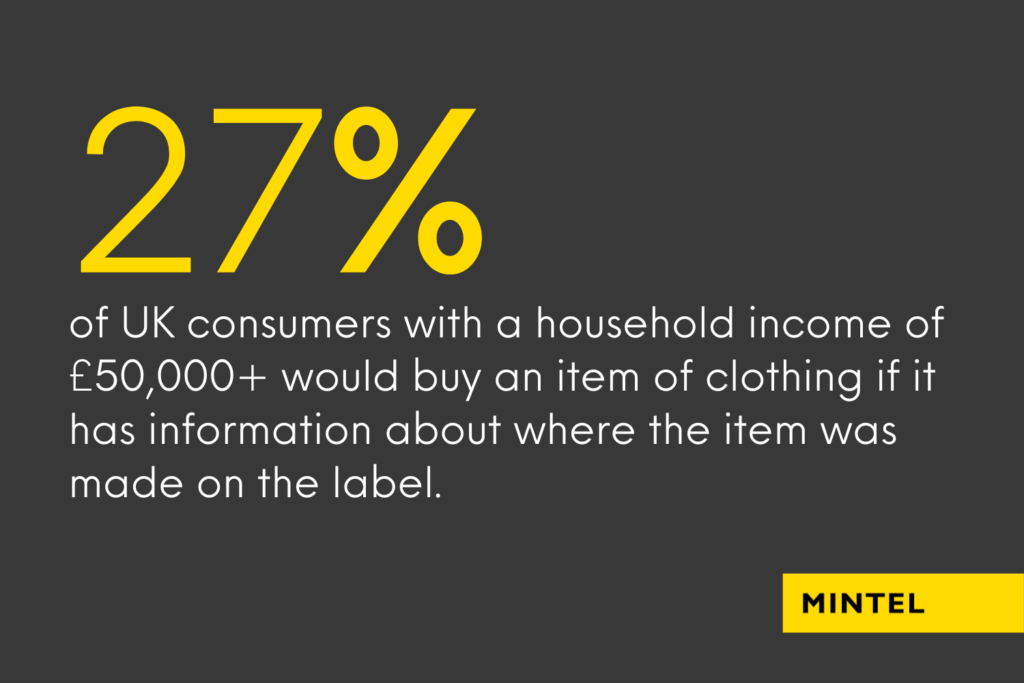
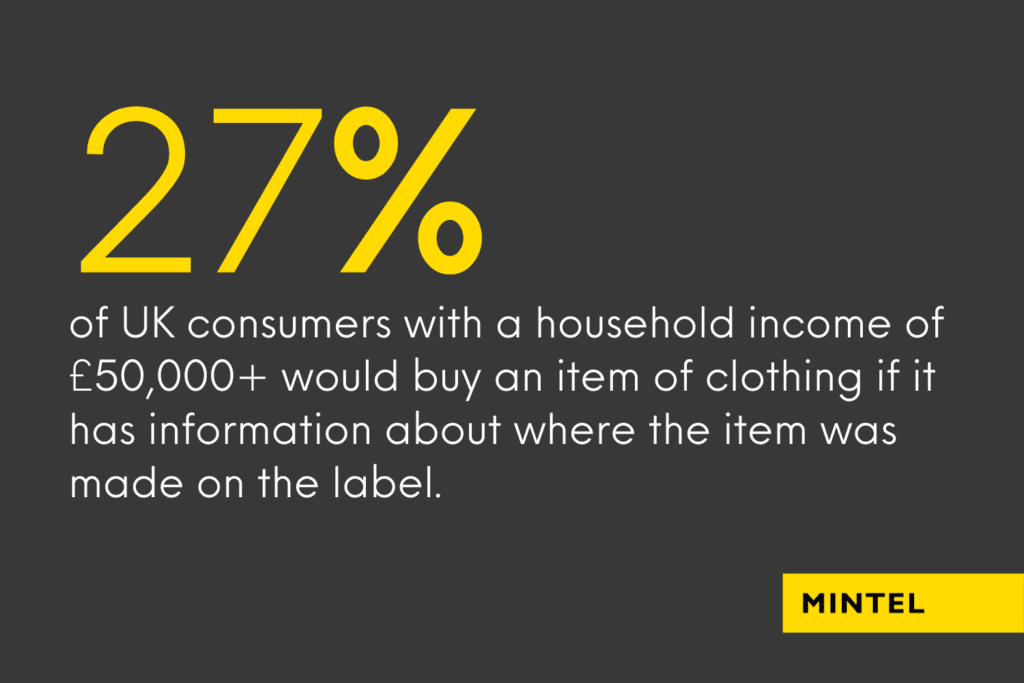
Amid a rise in dupes, Digital Product Passports will help consumers easily verify the product’s authenticity. By simply scanning the label, consumers can access detailed information about the entire manufacturing process. This will help build trust in a brand. The additional benefits of having the digital identity of a product, both for aftercare services and resale, could discourage consumers from buying counterfeit items.
For example, British footwear brand Loake decided to roll out DPPs across its entire range in August 2024 to promote the craftsmanship that defines their brand.


The focus on greater transparency for fashion can help grow interest in products made in the UK and increase their visibility throughout the consumer purchasing journey.
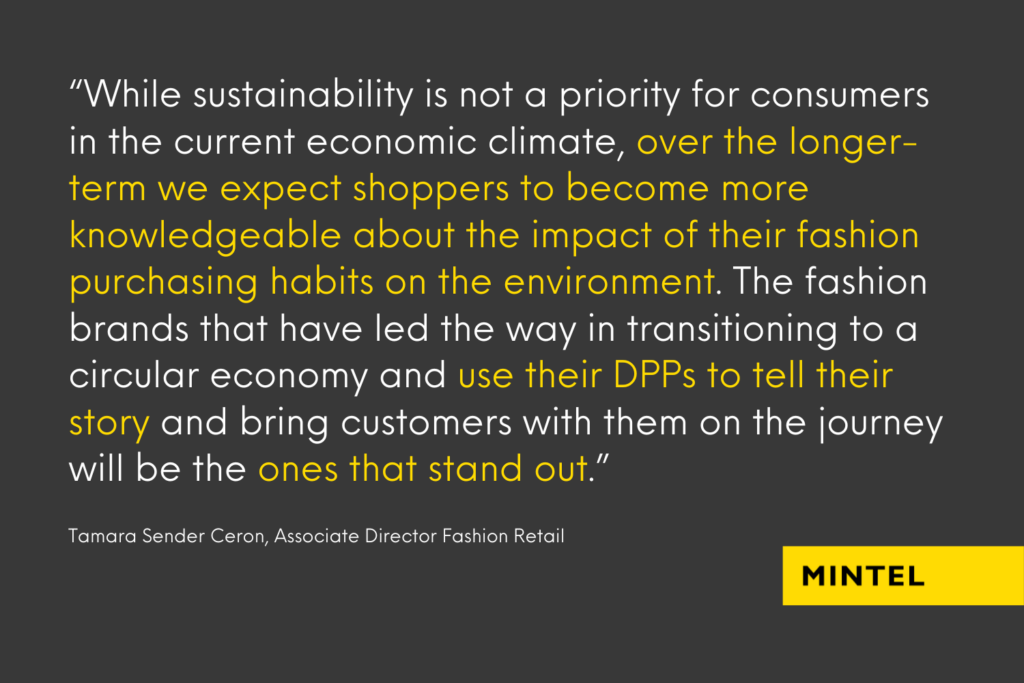
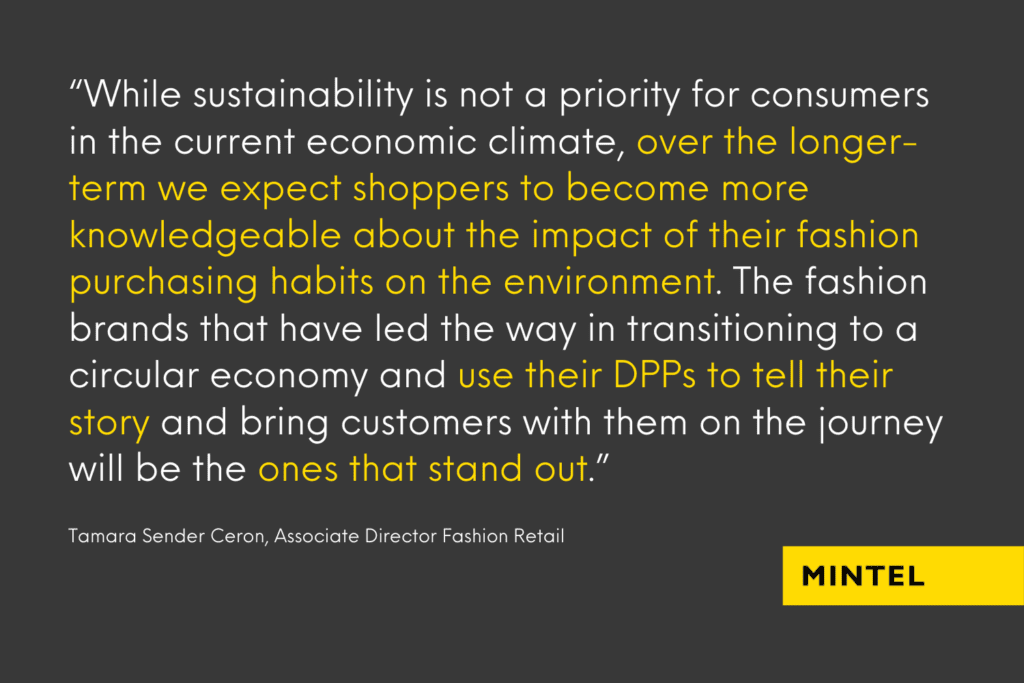
Adoption of DPPs in New Sectors
Enhancing furniture’s authenticity
Two furniture retailers, DFS and Ligne Roset, who are at opposite ends of the price spectrum, are trialling DPPs ahead of their implementation for textiles, which signals the growing importance of Digital Product Passports across various sectors.
DFS launched its pilot in February 2025. The results will provide a blueprint for how DPPs can be tailored to the furniture sector. Meanwhile, the premium furniture brand Ligne Roset, is looking to enhance authenticity by creating a unique product identifier for its Togo loveseat that will make it verifiable through a mobile app, which again, combats the rise in counterfeits.
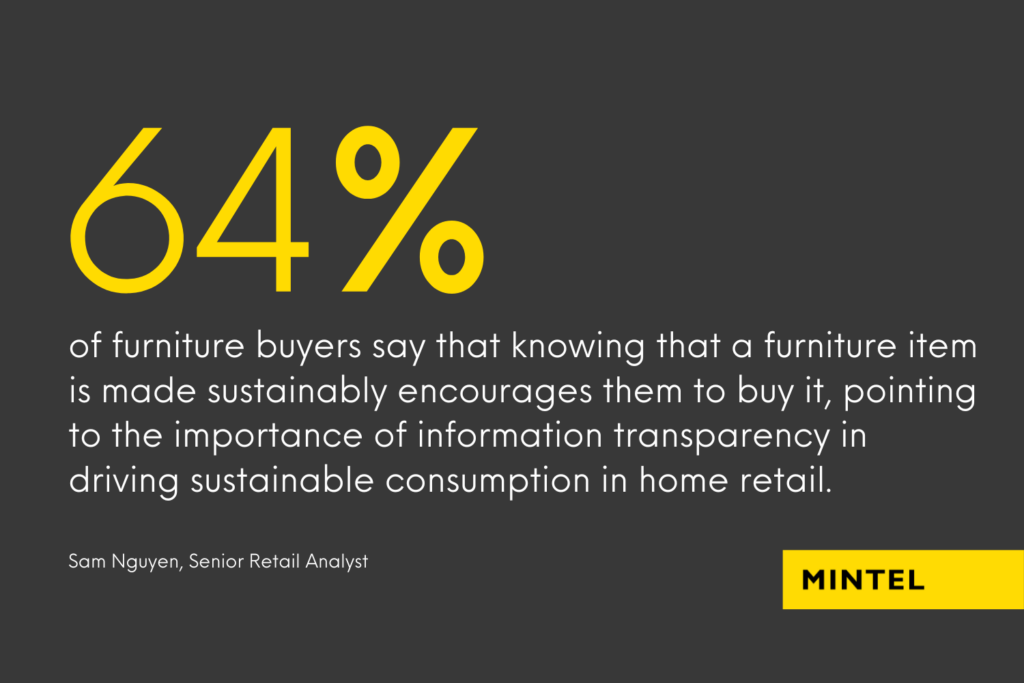
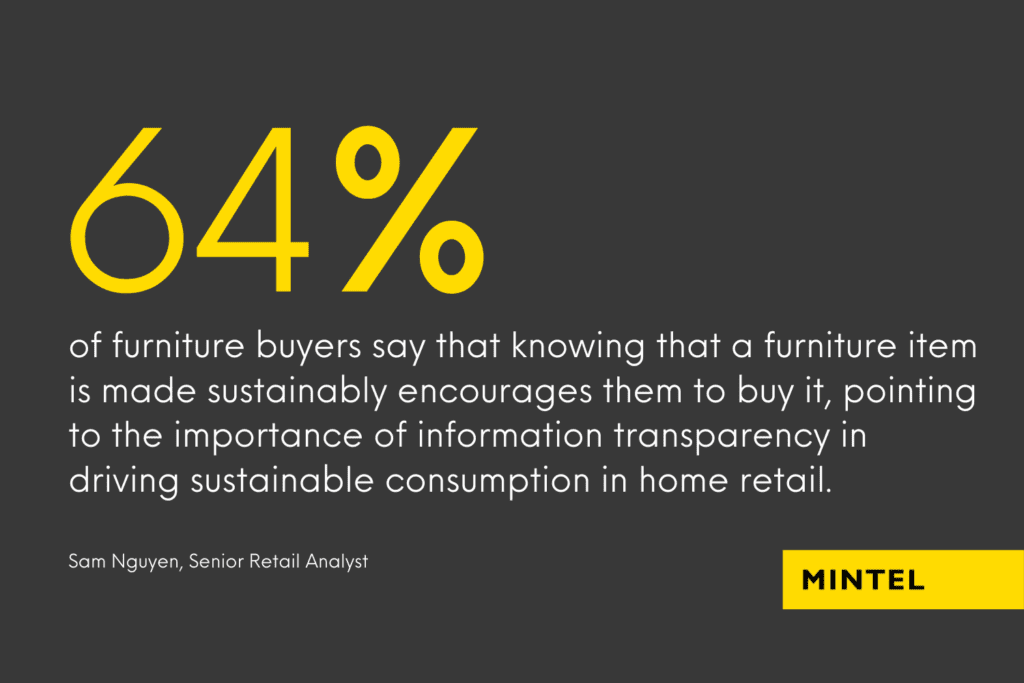
The view from the beauty aisle
DPPs are going to affect the beauty industry too. Our latest understanding is that cosmetics are seventh in line for DPP compliance and my colleague Vivienne Rudd, a senior beauty specialist in Mintel’s Consulting division, says that the beauty industry will have to be prepared to push the button by 2027 at the earliest or, more likely, 2030 at the latest.
Rudd says that DPPs will help to build confidence in sustainable beauty, but it is vital that the information is clear and readily accessible. After all, only 15% of UK beauty consumers say they are very confident that they know what a sustainable beauty product is, and 49% prioritise convenience over sustainability when choosing their beauty products.
There are already a number of beauty brands that already provide exemplary levels of transparency, but only one, Ulé which provides consumers with post-purchase DPPs. There is clearly a lot of work to be done in a relatively short period of time.
What’s Next?
Please contact Mintel Consulting for more information on how we can help with:
- Consumer research into which elements of DPPs will promote purchasing intent and brand loyalty
- Competitor intelligence to monitor how your competition is activating and communicating transparency
- Predictive analytics to identify the claims and language of the future